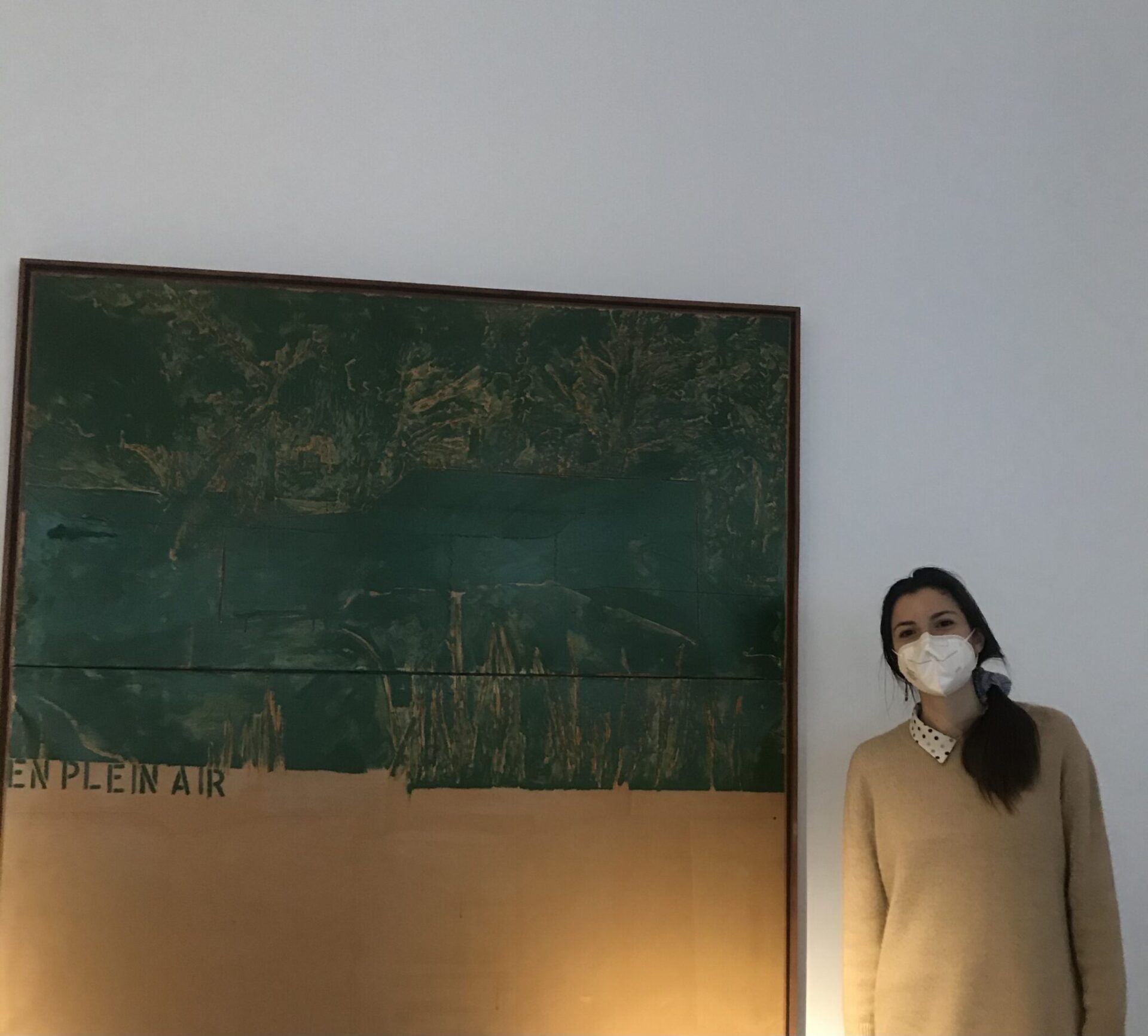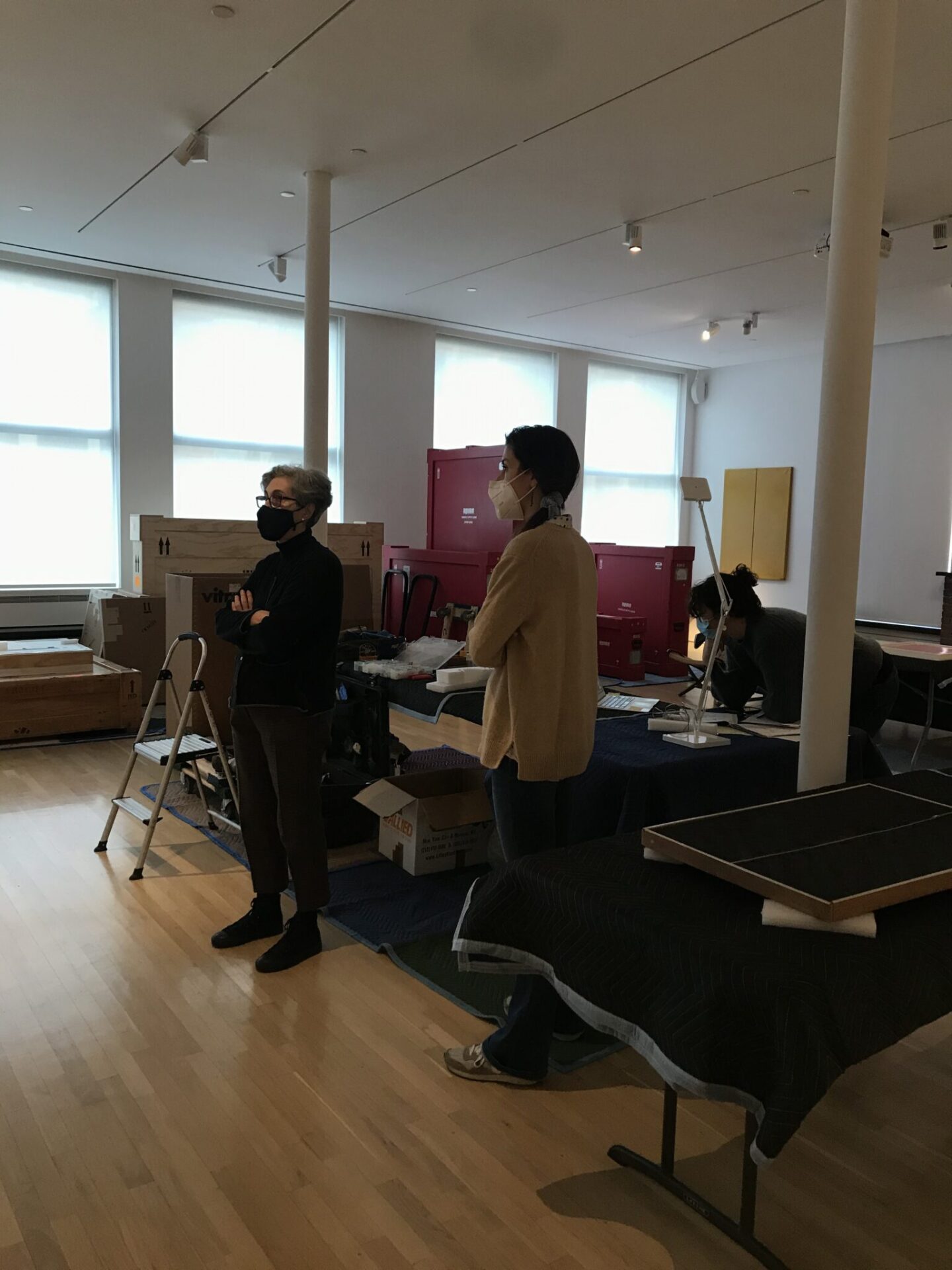- What made you become interested in Art History?
My interest didn’t come so soon, certainly not as a vocation. After high school, I had the great opportunity to start my Bachelor in Humanities in Venice, and the city was in a sense the one who guided me towards art history, in an immersive and powerful way. Getting to know the basis of the discipline in a city where every corner is an occasion to learn on the field was a fundamental part of the slow but irrevocable growth of a passion. Naturally, I began by approaching the Venetian Renaissance, and later moved especially to 20th century Italian art. Now I really can’t see how I could have studied something else.
- How was this first arrival to NYC, and what do you expect from these upcoming months, with all their difficulties but also their peculiarities?
First of all, I am very grateful that all of this has been possible. There have been days in which I believed this project was bound to be cancelled, and instead I managed to safely travel and reach you here. The support I have been receiving from CIMA for all kind of purposes is a huge help for a newcomer in these strange times. I understand the city as I am seeing it now is very different to what it used to be once, but it is also true that during this last year we have all got to know our own cities in new ways. A close friend of mine has wished me the best for this experience by saying that the pandemic ensures strengthened and unpredictable ties to the corners of the city where one lives – and I hope what she meant can be true also for me in NYC.
From a more practical point of view, then, many of the opportunities that the city offered haven’t disappeared. I come from Italy, where all the museums have been closed for a while now (and some of them have never re-opened after the first lockdown last March, indeed causing terrible damage to all the people who work there and to the public of visitors and researchers). Seeing that museums and galleries here can open their doors guaranteeing safety is a relief. Of course, not everything is easy: with the closure of libraries, research is naturally slowed down; the closure of cinemas, theatres and of meeting and cultural hubs goes in the same direction, too, and making contacts and getting to know people, which used to be exciting, is now veiled by a halo of danger. Nevertheless, as long as we are careful and responsible, I think there is margin to be optimist, and to hope in masked but wonderful encounters.

- What does your research project at CIMA aim at?
I am enthusiastic about the idea of finally having a lot of Schifano’s paintings and drawings under my eyes. It is rather difficult to extensively see his works in museums, since most of them are held by private owners, so a close and material analysis of the works will certainly be the first thing for me to do. More specifically, then, I would like to develop some major research paths, remaining in the chronology covered by CIMA exhibition (1960-1965). First, I would like to better investigate Schifano’s early landscape paintings (1962–65), highlighting their close relationship not only with photography and art in the US, but also with the Italian and European pictorial tradition. I would like to better understand how his experimentations with the genre of landscape, which always departed from a photographic image, then became a subtle and powerful pictorial attestation, conducted through bright enamels and on big surfaces. Schifano’s drawings of the early ’60s will play an important role in this research, too. To this end, the exhibition’s section of those big seventeen drawings, that attest the collaboration between the artist and the American poet Frank O’Hara, will be crucial. Finally, another topic that I would like to better analyze is the aspect of titles: Schifano often chose original and somehow unexpected titles for his works of art, and understanding something more about it is one of my hopes.
- Where did you spend the height of the COVID pandemic and what helped you ‘cope’?
I normally live in Florence, and I spent there my 2020, rapidly seeing the city changing and emptying. I am lucky enough to live in the center, where unfortunately most of the activities and spaces are conceived for the tourists’ needs. Since March, the void of the historical center, with its few citizens, and the new rediscovered geometries of its empty architectures have been a wonderful, and yet heartbreaking, panorama in my very short allowed promenades. My second luck is certainly the passion for what I study, which never made me suffer the hours in front of the computer, sitting at my desk. And third, and most importantly, I have learnt to share my enthusiasms and my worries openly and frankly with the ones I love, and this has made this difficult time a lot easier.

- If you could purchase any painting, could you name only one?
My Venetian part would come out here, and I would probably name Tintoretto’s late self-portrait now at the Louvre, of about 1588. But now all the other Venetians are coming to my mind, claiming the right to be mentioned!
